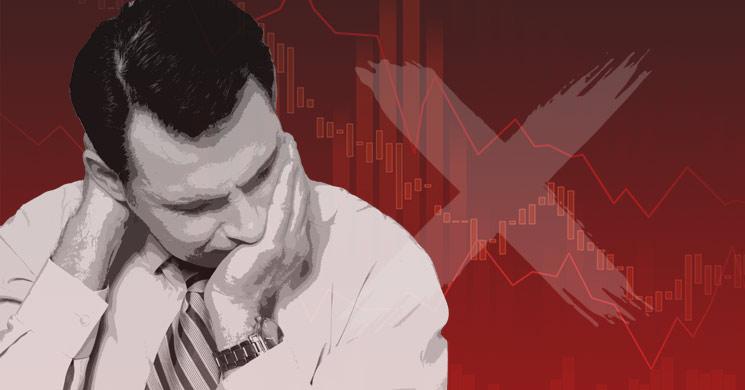
Achieving success in trading the precious metals markets requires avoiding numerous pitfalls as much, or more, than it does seeking out and executing winning trades. In fact, most professional traders will tell you that it's not any specific trading methodologies that make traders successful, but instead it's the overall rules to which those traders strictly adhere that keep them "in the game" long enough to achieve success.
Following are 10 of the more prevalent mistakes I believe metals traders make. This list is in no particular order of importance.
1. Failure to have a trading plan in place before a trade is executed. A trader with no specific plan of action in place upon entry into a trade does not know, among other things, when or where he or she will exit the trade, or about how much money may be made or lost. Traders with no pre-determined trading plan are flying by the seat of their pants, and that's usually a recipe for a "crash and burn."
2. Inadequate trading assets or improper money management. It does not take a fortune to trade markets with success. Traders with smaller trading accounts can and do trade futures and cash markets successfully. And, traders with large accounts can and do lose it all in a heartbeat. Part of trading success boils down to proper money management and not gunning for those highly risky "home-run" type trades that involve too much trading capital at one time.
3. Expectations which are too high, too soon. Beginning traders that expect to quit their "day job" and make a good living trading in their first few years of trading are usually disappointed. You don't become a successful doctor or lawyer or business owner in the first couple years of the practice. It takes hard work and perseverance to achieve success in any field of endeavor--and trading the metals markets is no different. Trading is not the easy, "get-rich-quick" scheme that a few unsavory characters make it out to be.
4. Failure to use protective stops. Using protective buy stops or sell stops upon entering a trade provide a trader with a good idea of about how much money he or she is risking on that particular trade, should it turn out to be a loser. Remember that cash market traders can successfully employ “mental stops” that don’t have to be placed with a broker. Protective stops are a good money-management tool, but are not perfect. There are no perfect money-management tools in trading markets.
5. Lack of "patience" and "discipline." While these two virtues are over-worked and very often mentioned when determining what unsuccessful traders lack, not many will argue with their merits. Indeed. Don't trade just for the sake of trading or just because you haven't traded for a while. Let those very good trading "set-ups" come to you, and then act upon them in a prudent way. The market will do what the market wants to do--and nobody can force the market's hand.
6. Trading against the trend--or trying to pick tops and bottoms in markets. It's human nature to want to buy low and sell high (or sell high and buy low for short-side traders). Unfortunately, that's not at all a proven means of making profits in trading. Top pickers and bottom-pickers usually are trading against the trend, which is a major mistake.
7. Letting losing positions ride too long. Most successful, shorter-term metals traders will not sit on a losing position very long at all. They'll set a tight protective stop, and if it's hit they'll take their losses (usually minimal) and then move on to the next potential trading set up. Shorter-term traders who sit on a losing trade, "hoping" that the market will soon turn around in their favor, are usually doomed. Longer-term “buy-and-hold” metals traders can see their markets trade “under water” for longer because the elements of price inflation and increasing worldwide demand will eventually work in their favor and markets will appreciate.
8. "Over-trading." Trading too many markets at one time is a mistake--especially if you are racking up losses. If trading losses are piling up, it's time to cut back on trading, even though there is the temptation to make more trades to recover the recently lost trading assets. It takes keen focus and concentration to be a successful trader. Having "too many irons in the fire" at one time is a mistake.
9. Failure to accept complete responsibility for your own actions. When you have a losing trade or are in a losing streak, don't blame your broker or someone else. You are the one who is responsible for your own success or failure in trading. You make the trading decisions. If you feel you are not in firm control of your own trading, then why do you feel that way? You should make immediate changes that put you in firm control of your own trading destiny.
10. Not getting a bigger-picture perspective on a market. One can look at a daily bar chart and get a shorter-term perspective on a market trend. But a look at the longer-term weekly or monthly chart for that same market can reveal a completely different perspective. It is prudent to examine longer-term charts, for that bigger-picture perspective, when contemplating a trade.
That's it for now. Next time, we'll focus on another important topic on your road to trading success. Stay tuned!--Jim Wyckoff
Read more by Jim Wyckoff







